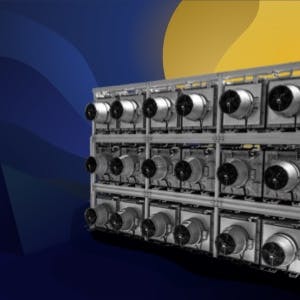- Home
- All updates
- EDGE Insights
- Industries
- Company Search
- My Watchlists (Beta)
All Updates
LanzaTech and Danone produces MEG using captured carbon
Snowflake acquires Datavolo to enhance data integration capabilities for undisclosed sum
Snowflake acquires Datavolo to enhance data integration capabilities for undisclosed sum
OceanWell raises USD 11 million in Series A funding to build water farms
H launches Runner H, an AI agent for business automation
Capgemini partners with Mistral AI and Microsoft to expand GenAI solutions globally
Converge Bio launches biotech LLM platform with USD 5.5 million seed funding
Snowflake partners with Anthropic to integrate Claude AI models into Cortex AI platform
DeepSeek releases AI reasoning model DeepSeek-R1
ICEYE partners with Lockheed Martin and Finnish firms to develop defense space technologies
Dematic installs AutoStore system at South West Healthcare logistics hub

Carbon Capture, Utilization & Storage (CCUS)
LanzaTech and Danone produces MEG using captured carbon
-
A consortium led by LanzaTech, a carbon capture and utilization (CCU) company, and French multinational food producer Danone has discovered a method to produce monoethylene-glycol (MEG) directly from captured carbon emissions. The production of MEG was proven at laboratory scale and was validated by two external laboratories.
-
The novel technology can convert carbon emissions from steel mills or gasified waste biomass directly into MEG, which is a key ingredient for polyethylene terephthalate (PET), resins, bottles, and fibers. LanzaTech has successfully reprogrammed its ethanol-producing bacteria to convert carbon into MEG using synthetic biology and AI tools.
-
The technology is still in the proof-of-concept stage and this is reportedly the first time a method has been discovered to produce MEG from gas using bacteria. It avoids multiple steps seen in the conventional method of producing MEG, which first converts ethanol into ethylene and then into MEG.
-
Following a multiyear development phase, LanzaTech expects that when its technology is successfully scaled, it could lead to environmentally friendly production of PET bottles and fibers. The company, alongside Danone, is actively partnering with leading companies to improve the environmental impact of their packaging and plans to continue to scale up its direct-to-MEG tech.
Contact us
By using this site, you agree to allow SPEEDA Edge and our partners to use cookies for analytics and personalization. Visit our privacy policy for more information about our data collection practices.